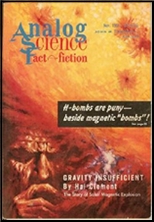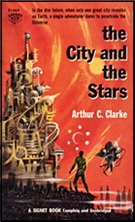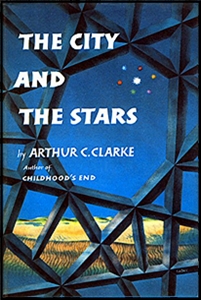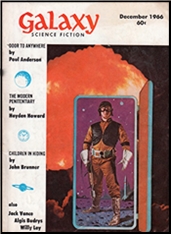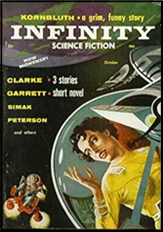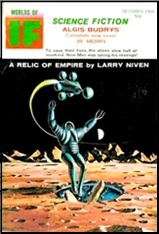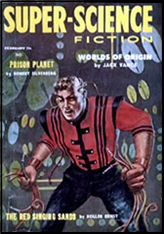RAYMOND J. HEALY & J. FRANCIS McCOMAS, Editors – Famous Science-Fiction Stories: Adventures in Time And Space. The Modern Library G-31; hardcover, 1957, xvi + 997 pages. First published as Adventures in Time in Space, Random House, hardcover, 1946. Bantam F3102, paperback, 1966, as Adventures in Time and Space (contains only 8 stories). Ballantine, paperback, 1975, also as Adventures in Time and Space.
Part 5 can be found here.
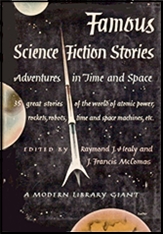
P. SCHUYLER MILLER “As Never Was.†Time-travel again, somewhat better handled than in “The Sands of Time,†but Miller leaves himself with a paradox he can’t write himself out of. (2)
Update: First published in Astounding Science Fiction, January 1944. First reprinted in this anthology. Collected in The Titan (Fantasy Press, hardcover, 1952). Also reprinted in Alpha 5, edited by Robert Silverberg (Ballantine, paperback original, 1974). This is Miller’s second story in this anthology. You can find my comments on the first here.
ANTHONY BOUCHER “Q.U.R.†Three men form Quimby’s Usuform Robots to produce completely functional robots. Not one of Boucher’s best but entertaining. (3)
Update: First published in Astounding Science-Fiction, March 1943. First reprinted in this anthology. First collected in The Compleat Werewolf and Other Stories of Fantasy and Science Fiction (Simon & Schuster, hardcover, 1969). Later also reprinted in The Great Science Fiction Stories Volume 5, 1943, edited by Isaac Asimov, Martin H. Greenberg (DAW Books, paperback original, 1981). During his lifetime Boucher was known for his contributions to both the SF and mystery community about equally well . I suspect he is better known today by mystery fans, but I sometimes wonder how many people who go to Bouchercons really know who Anthony Boucher was.
DON A. STUART “Who Goes There?†Novella. The basis for the movie The Thing. An alien monster is found buried in the Antarctica icecap, and it threatens to take over the world because of its ability to take on any shape or form exactly. Much better than might be expected from such a story, and after a slow beginning, the story moves very quickly, particularly after the creature’s unusual abilities are discovered. (4)
Update: First published in Astounding Science-Fiction, August 1938. First reprinted in this anthology. First collected in Who Goes There? (Shasta, hardcover, 1948). Also reprinted in The Science Fiction Hall of Fame, Volume Two A: The Greatest Science Fiction Novellas of All Time Chosen by the Science Fiction Writers of America, edited by Ben Bova (Doubleday, hardcover, 1973). Stuart was a pen name of John W. Campbell, Jr., long time editor of Astounding/Analog SF.
– July-August 1967
TO BE CONTINUED.…
